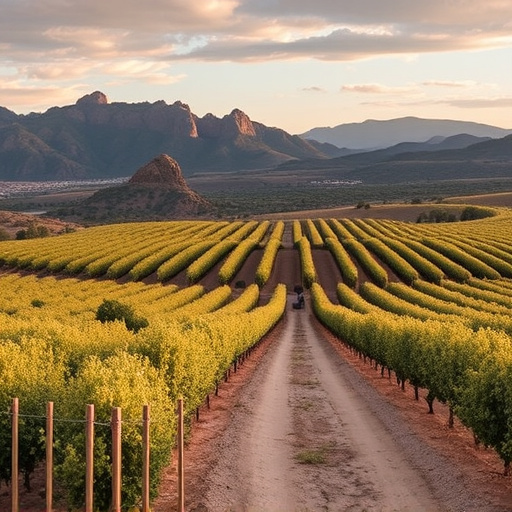In southern Arizona, unique microclimates driven by elevation, water sources, and vegetation create diverse growing conditions for grapes, resulting in a wide range of wine styles and flavors. Winemakers leverage these microclimates to craft distinctive wines reflecting their specific terroirs, from full-bodied Grenache and Mourvèdre at higher elevations to richer Tempranillo and Zinfandel in warmer, lower areas. Understanding these microclimates is essential for appreciating the diverse experiences offered by southern Arizona wineries.
Discover the enchanting world of microclimate-driven wines in Southern Arizona, where diverse terroirs shape distinctive vintages. This article delves into the intricate relationship between microclimates and winemaking, exploring how these localized weather conditions give rise to unique wine styles across the region. From the sun-drenched valleys to the cooler mountain slopes, we compare and contrast the sensory experiences offered by prominent Southern Arizona wineries, shedding light on the magical variations in their offerings.
- Understanding Microclimates and Their Impact on Wine Production in Southern Arizona
- – Definition of microclimates and their role in winemaking
Understanding Microclimates and Their Impact on Wine Production in Southern Arizona

In southern Arizona, understanding microclimates is key to unlocking the unique characteristics of wines produced in this diverse region. Each terroir, shaped by factors like elevation, proximity to water sources, and surrounding vegetation, fosters distinct growing conditions for grapes, leading to varied flavors and aromas in the final product. This regional variety allows southern Arizona wineries to craft distinctive wines that reflect their specific terroirs.
Microclimates play a significant role in wine production here, as they influence everything from grape ripeness to pest pressures. For instance, higher elevations typically offer cooler temperatures, slowing grape development and concentrating flavors, while lower areas may experience warmer days and cooler nights, promoting slow, even ripening. These variations result in a wide range of grape varieties and styles that contribute to the rich wine culture of southern Arizona wineries.
– Definition of microclimates and their role in winemaking

Microclimates, distinct local climates that differ from surrounding areas, play a pivotal role in shaping the characteristics of wine produced in southern Arizona wineries. Each region within this vast territory experiences unique temperature variations, humidity levels, and sunlight exposure due to factors like elevation, topography, and proximity to water bodies. These microclimates allow winemakers to cultivate an array of grape varieties, each thriving in its ideal environmental conditions. As a result, southern Arizona offers a diverse range of terroirs (the combination of soil, climate, and geography that influences wine quality) contributing to the region’s renowned craft wines.
Understanding these microclimates is essential for appreciating the unique flavors and styles emerging from southern Arizona wineries. For instance, higher elevations typically offer cooler temperatures, favoring grapes like Grenache and Mourvèdre known for their full-bodied, aromatic profiles. In contrast, lower-lying areas with warmer conditions are ideal for thriving varieties such as Tempranillo and Zinfandel, producing wines with richer, more intense flavors. This intricate interplay between microclimate and terroir results in a vibrant wine scene where each southern Arizona winery offers a distinct and captivating experience for wine enthusiasts.
In exploring the microclimates of southern Arizona, we’ve discovered that these unique terroirs significantly influence the character and quality of local wines. From the sun-kissed hillsides to the cooler canyon regions, each area offers distinct challenges and advantages for winemakers. By understanding and harnessing these microclimates, southern Arizona wineries can produce a diverse range of exceptional wines that reflect the region’s varied landscapes and climate. This study highlights the potential for further exploration and innovation in the wine industry, showcasing the remarkable terroir-driven wines that southern Arizona has to offer.
